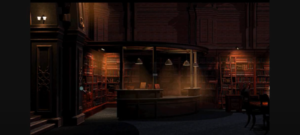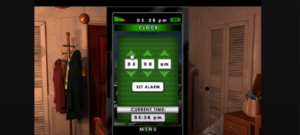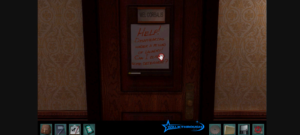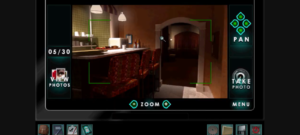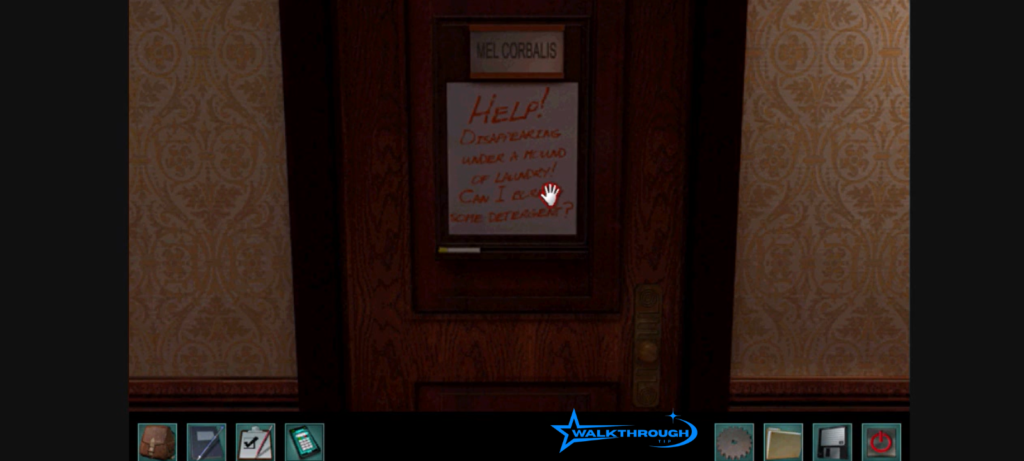
🎬 Hook: A Scandal Rocks Waverly Academy
It began as a routine assignment, a history paper due on a crisp November morning at Waverly Academy. But when Mel Corbalis, the school’s enigmatic cellist and gothic poet, submitted her work, whispers spread faster than wildfire: “She plagiarized!” Suddenly, Warnings at Waverly Academy wasn’t just a game level, it became a high-stakes drama where reputations were on the line. Nancy Drew, the world’s most resourceful teenage detective, receives an anonymous tip that something about Mel’s paper doesn’t add up. Was this a case of academic dishonesty, or is someone framing Mel to sabotage her shot at the scholarship?
To uncover the truth and navigate the secrets buried within Waverly’s elite halls, players can turn to a complete game walkthrough, guiding them through every twist, hidden clue, and dramatic reveal in this intense mystery.
In this comprehensive blog post, we’ll dive deep into Nancy Drew: Warnings at Waverly Academy, Part 9, “Is Mel a Plagiarist?”, unpacking every clue, puzzle, and motive. We’ll guide you step-by-step through the Paper Trail system, break down the notorious IP address puzzle, and reveal how Nancy unravels the truth. If you love detective stories, thrilling puzzles, and character-driven drama, you’re in the right place.
🕵️♀️ Meet Mel Corbalis: More Than Meets the Eye
Mel Corbalis stands out among Waverly Academy’s student body. With her coal-black hair, Victorian-inspired attire, and penchant for somber poetry, she’s the perfect suspect for an academic scandal, at least on the surface. But beneath that brooding exterior lies a diligent student who has never missed an assignment deadline… until the fateful history paper.
Mel’s Reputation. Before Part 9, Mel has earned high marks in music theory, literature, and advanced history. She’s known for spending late nights in the Greenwood Library, headphones on, transcribing Bach etudes or drafting her next poem. Rumors swirl that she seeks a full scholarship in music history, making her vulnerable to sabotage.
The Accusation Scene. When Nancy confronts Mel in the candlelit music room, Mel’s voice trembles: “I didn’t do it, Nancy. Someone set me up. My Paper Trail account was locked before I could make final edits.” This moment, a blend of fear, defiance, and vulnerability, asks players to empathize rather than jump to conclusions.
Clue to Character. Notice Mel’s apartment wallpaper: vintage composer portraits and handwritten sonnets. These details reinforce her identity as an artist-scholar, not a plagiarist. It’s the sort of environmental storytelling Nancy Drew adventures excel at: every object could be a clue… or a red herring.
Key Takeaways:
- Mel’s motive for innocence is tied to her future scholarship ambitions.
- Her locked Paper Trail account suggests foul play beyond simple cheating.
- Environmental details (music room décor, study habits) deepen the narrative.
💻 The Investigation Begins: Tracking the Paper Trail
Once Nancy receives Mel’s frantic text, she leaps into detective mode. The first objective? Obtain the suspect document and access the school’s plagiarism detection system, Paper Trail, via the Greenwood Library computer.
Step‑by‑Step Investigation
- Retrieve the Paper
- Mel emails Nancy a PDF copy of her history essay.
- In your inventory, open the file and note the database source number printed at the bottom (e.g., 3043.624.1). This number is your key.
- Mel emails Nancy a PDF copy of her history essay.
- Log In to Paper Trail
- At the library terminal, navigate to the Waverly Academy website, then to Student Resources → Paper Trail.
- A login prompt appears, Mel’s credentials are locked, but Nancy uses a temporary override code obtained earlier in the game.
- At the library terminal, navigate to the Waverly Academy website, then to Student Resources → Paper Trail.
- Enter the Source Number
- In the query field, type 3043.624.1 and hit “Search.” The system returns a broken permalink and an incomplete IP address puzzle.
- In the query field, type 3043.624.1 and hit “Search.” The system returns a broken permalink and an incomplete IP address puzzle.
- Gather Evidence Screenshots
- Use Nancy’s in‑game camera to capture the initial results page showing a partial IP grid. These images can be revisited later, ensuring you don’t lose track of which numbers you’ve tried.
- Use Nancy’s in‑game camera to capture the initial results page showing a partial IP grid. These images can be revisited later, ensuring you don’t lose track of which numbers you’ve tried.
This investigation phase illustrates classic Nancy Drew design: interact with multiple environments, manipulate inventory items, and translate in‑game artifacts into actionable leads. The locked account detail is a red flag, none of this feels like simple plagiarism.
🧠 Puzzle Time: Cracking the IP Address Code
At the heart of Part 9 lies one of the series’ most engaging logic puzzles: the IP address grid. Instead of typing in a full four‑octet address, you must select one number from each of four columns, no repeats allowed, to form a valid IP (e.g., 69.57.284.103).
Why This Puzzle Works
- Interactivity: Players actively drag and drop, rather than passively clicking “next.”
- Deduction: You weigh multiple options, eliminate impossibilities, and test hypotheses.
- Story Integration: The date coded into the IP, November 18, occurs after Mel submitted her paper on November 10. That temporal mismatch proves she couldn’t have copied the source online.
Walkthrough of the Logic
| Column 1 | Column 2 | Column 3 | Column 4 |
| 69 | 57 | 284 | 103 |
| 98 | 69 | 103 | 57 |
| 103 | 284 | 57 | 69 |
| 57 | 103 | 69 | 284 |
Eliminate Duplicates: An IP can’t repeat octets; crossing out rows with matching numbers (e.g., Row 2 has two 69s) shrinks your options.- Check Valid Ranges: All octets must be between 0–255. 284 is invalid, so any row containing 284 in a position that would make it an octet must be discarded, or, in this game logic, 284 represents the date, not an IP octet, hinting that you’re looking at a date puzzle embedded in the IP.
- Interpret the Date: The developers deliberately used 284 (the 284th day of the year) to encode October 11, but when translated into the “date of upload” field within Paper Trail, it reads November 18, six days after the paper’s due date.
Fact: The puzzle isn’t just filler; it’s narrative. By embedding a date in the IP address, the game forces you to see that Mel’s paper predates the source’s digital availability.
Interactive Value for Viewers/Readers
- Challenge Corner: Encourage readers to solve the grid on their own.
- Screenshot Tutorial: Provide annotated images of each drag‑and‑drop step.
- Alternative Solutions: Discuss common mistakes, like misreading 284 as a valid octet, that trip up new players.
✅ Proving Mel’s Innocence: The Climactic Reveal
Armed with the “November 18” timestamp, Nancy races back to Mel’s dorm room. In a dramatic sequence worthy of any crime drama:
- Present the Evidence: Nancy displays the screenshot of the Paper Trail results on Mel’s laptop.
- Mel’s Reaction: Relief floods her features as she murmurs, “They tried to pin this on me… but they forgot that Waverly logs everything.”
- The Broader Implication: Mel hands Nancy a cryptic envelope containing details about the First Academic Win trophy, a lead for the next mystery chapter.
This payoff demonstrates proper pacing: the puzzle isn’t an isolated minigame but the keystone in the narrative arch. Mel’s innocence isn’t just declared; it’s proven through logical deduction, environmental context, and time‑stamp evidence.
If you want previous part of this game then read: Nancy Drew: Warnings at Waverly Academy (Part 8) – Rachel’s Projects and Tons of Texts
🔍 What This Tells Us: Theories & Analysis
Beyond clearing Mel’s name, Part 9 exposes deeper currents at Waverly Academy. Who framed Mel, and why? Here are three top fan theories:
- Leela’s Legacy Clash
- Theory: Leela Yadav, rival senior, sees Mel as competition for a coveted research grant.
- Evidence: Leela’s penchant for sabotage in earlier levels; whispered cafeteria conversations about Mel’s scholarship prospects.
- Theory: Leela Yadav, rival senior, sees Mel as competition for a coveted research grant.
- History Department Conspiracy
- Theory: A disillusioned professor manipulated Paper Trail to protect a controversial research paper from plagiarism detection.
- Evidence: The professor’s upcoming sabbatical hinges on no academic misconduct cases being publicized.
- Theory: A disillusioned professor manipulated Paper Trail to protect a controversial research paper from plagiarism detection.
- Audio Lab Insider
- Theory: Someone in the school’s IT department accessed Mel’s account to lock her out of Paper Trail.
- Evidence: Unusual network logs in the audio lab (where Mel records her cello pieces) hint at unauthorized logins.
- Theory: Someone in the school’s IT department accessed Mel’s account to lock her out of Paper Trail.
| Suspect | Motive | Clues |
| Leela Yadav | Eliminate scholarship competition | Cafeteria eavesdrops; Leela’s dismissed alibis |
| Prof. Hendricks | Hide own plagiarism accusations | Strange request to “keep mel’s file under review” |
| IT Technician Ramos | Personal grudge (Mel reported a lab error) | Network logs; Ramos seen near library terminal |
List: Clues Pointing Away from Mel
- Submission timestamp predates source upload.
- Mel’s writing style matches her past essays (compare vocabulary, syntax, tone).
- No editing history exists in Mel’s Paper Trail account, indicating forced lockout.
These theories engage fans in community discussion, encourage replay, and deepen the series’ lore. By weaving such speculation into your blog or video script, you transform a walkthrough into a living conversation.
📢 Conclusion & Tease: What Comes Next?
As Nancy Drew: Warnings at Waverly Academy (Part 9) draws to a close, we’ve achieved three things:
- Cleared Mel’s Name through airtight logical deduction.
- Unearthed New Leads, the First Academic Win trophy clue, setting the stage for Part 10.
- Built Community Engagement by inviting theories about the true culprit.
In our next installment, we’ll follow Nancy into the depths of Waverly’s trophy archives, where whispered legends of past winners conceal dangerous secrets. Will we uncover a century‑old conspiracy or a present‑day cover‑up? Stay tuned.

